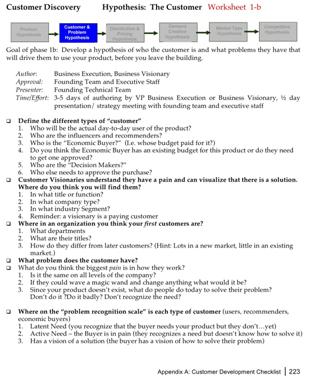Over the last two weeks as I have run the latest batch of my victims through a course on entrepreneurship, one question keeps on stumping all of them.
- How do I build a verbal and visual portrait of my customers and what level of detail is enough?
- Why is this important?
- Are there any short cuts that I can use?
Let’s start with question number 2 first?
If you think of your pitch as a movie with a plot, your best bet is to build a plot that revolves around a hero (or central character) that is looking, searching or seeking something. It could be the love of his life (500 hundred days of summer), his destiny (Titan AE and/or Treasure Island) or the meaning of life (Hitch Hikers Guide to the Galaxy) or simply escape (K-Pax with Kevin Spacey). Great movies get the audience involved from the beginning showcasing the pain and making them wish and pray for a happy ending for the central character.
Who is the Hero in your movie/pitch? No it is not you, nor the investor, nor the product. Your pitch is best delivered in third person and the pain your are documenting is the pain of the customer. And the story you really want to tell is the how badly he or she wants this pain to get fixed, addressed, nuked and neutralized. Somewhere in there, maybe towards the end is space for production credits (your profile) and maybe a sexy placement for your product (showing the hero using it in exactly the right context and scene where the audience is aware of the sub text and would love the usage). But all of that comes later; this movie is primarily about your customer.
Sounds easy, right, what seems to be the problem then. The problem is that a large number of pitches start with a customer profile as empty of details as the stick figure you see below. Who is this guy, where is he from, what does he feel, how do I find him, what do I say to him, will he bleed when I cut him?
Technically speaking what you really want when it comes to your customers profile is to draw a Mona Lisa. Ideally a restored edition that is rich with colors and details. You are still missing data but at least there is a face in front of you that you can now work with. You can now add details about demographics and profiles (age, education, job role, experiences, social preferences, reading interests, family size, ethnicity, political views, and personal tastes) and any other piece that helps you understand what drives this individual.
Once you have the Mona Lisa you can focus on the pain that would drive the hero of your movie to the transaction on which your plot is based. And you can link your plot to all the other questions the audience would like to ask about the transaction. Why, how, how much, when and where?
Imagine having a conversation with a customer where earlier you could only ask him “Do you like the idea and will you buy the product if I build it”? Now armed with the profile you have created you can ask him how he would use the product and what are the most important features that he would like to see first? You can engage him about how why he would chose one version over the other and the value specific features represent for him. Rather than push for a close with your engagement you help him visualize how easy his life becomes with your solution as well as the value the solution creates for him. In the first conversation you would have come back with a possible commitment. In the evolved, engaged version of the conversation you come back with a roadmap, a commitment and in most cases a check.
Here is a simple example that illustrates my point. How many times in a year do you get a call from your credit card company and/or bank telling you about a home equity product, a personal loan product, a personal accident insurance plan, a travel consolidation scheme, a timeshare concept; basically everything in the world that you wouldn’t need. For a change how would you react when the callers pitches the following
“Mr. Farid we have noticed that you travel a great deal and have breached your credit limit a few times during your international travel. I wanted to apologize for the inconvenience and wanted to let you know that we have approved an extension in your credit limit. I just need your approval on the phone to activate it”. How many of us would be able to turn that down?
How do I build the profile and are there any short cuts?
And now to answer questions (1) and (3) above.
So how do you document this pain? There is a list of simple questions that you can ask
Is the customer in pain right now? Is he aware of it? What is he taking for it? How does that help him? Why would he want to switch? Do we have what he needs?
Or
When will the customer start feeling the pain? How bad would it be? What would be his expectation for pain relief and paying capacity? How will he find out about us?
Or
How does this pain manifest? How would you describe it? In levels and layers or in one dimension? Which level, layer or dimension do you target when you sell relief? When you meet the customer how do you sell, pitch, present the product?
But it isn’t enough to ask these questions and answer them. You also have to validate these answers by talking to customers, pitching to them and hopefully closing a deal that validates your sales and customer pain pitch.
Steve Blank did a great job with his customer development check list to frame the question “who is the customer?” inhis customer development framework, see below. Using Steve’s framework you add two more questions
Imagine a day in his life without your product? With your product? How do you frame that in your pitch? Use your answers to script the scene in the movie where the customer walks in to focus, uses your product and changes the world permanently.
Once you have these two pieces in place you are well on your way on your personal roadmap to credibility. The only questions you have to answer now deal with whether the customer will buy your product, for how much and will that be enough for you make a decent margin and scale.
If the answer is no, you go back and decide what needs to change in the customer, pain, product, feature, price combo for this relationship to work. As Steve says in his notes and power point, it is an iterative process.
Let’s take a look a few examples from the simplest to possibly more complex from my personal life and choices as a customer.
Advil and Ciproxin
I switched from Panadol to Advil a decade ago for a simple reason. It was relatively easier on my stomach and also had a higher potency. Two tablets of Panadol and I would be out of action with stomach cramps within a few hours. Switched to Ciproxin (Ciprobay) as an antibiotic also for exactly the same reason. For the first 30 year of my life I would rather nurse a headache or a fever than take a Panadol for it. This was before I discovered ibuprofen. Since then I have become a pill-popping Advil fan.
What was my pain? A low tolerance to caffeine, which came bundled with the Panadol. Advil fixed that problem but I wasn’t aware of solution. I knew that there was something wrong but it took one prescription from a family physician for me to stand up and say where were you all of my life.
Picking a school for our kids
When the time came for us to pick a school for our kids we wanted them to get an education that helped them think, grow and contribute to society as well as learn how to form and express opinions and have fun doing so. It would be nice if they could retain our middle class values, make friends that were like them and found teachers who loved them. What was our pain? What were we looking for? How did we find a cure?
Travelling with Emirates
Why do I travel with Emirates? Here is an extract from a travel advisory piece I wrote eight months ago.
“As I have grown older, my appetite for adventure has been replaced by a desire for consistency. I no longer like surprises when it comes to food, hotel rooms, my airplane seats and airports. And while Emirates has recently started having issues with age, it has done a remarkable job of delivering consistent services to its frequent fliers. Beginning with food, economy class seats, skywards program, the ease with which you can upgrade and check in online, the number of free upgrades you get and ending with their travel schedule and lounges across the world, there is no other airline that comes even close”
Home work assignment: Look up High Sierra Bags. Build a customer profile for people who buy the High Sierra Brand.




Comments are closed.